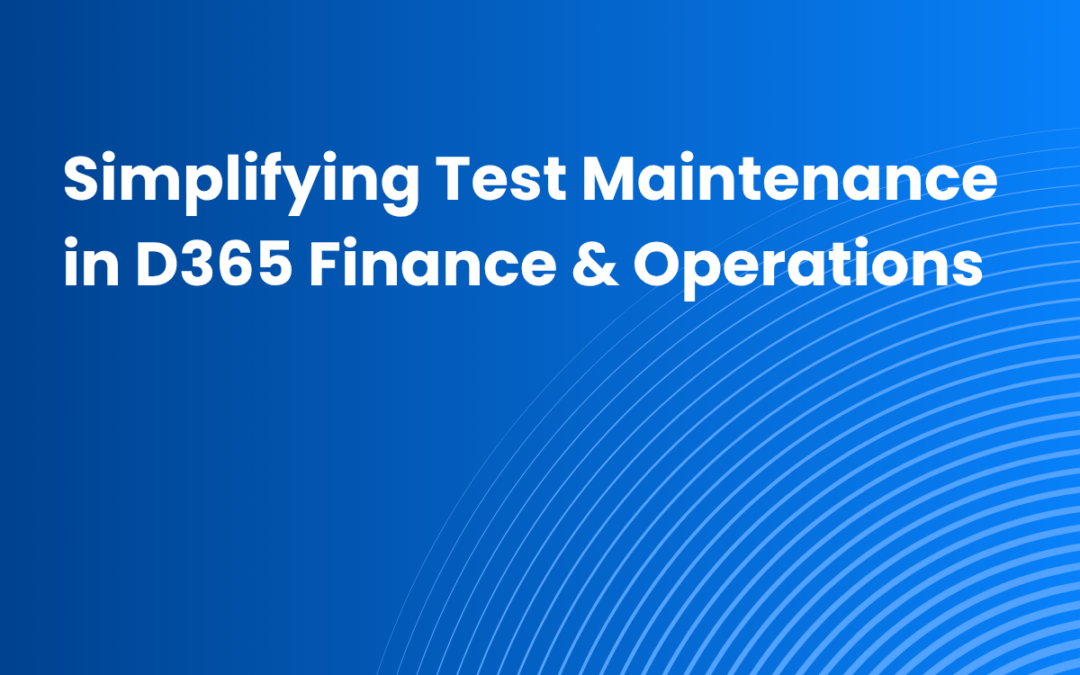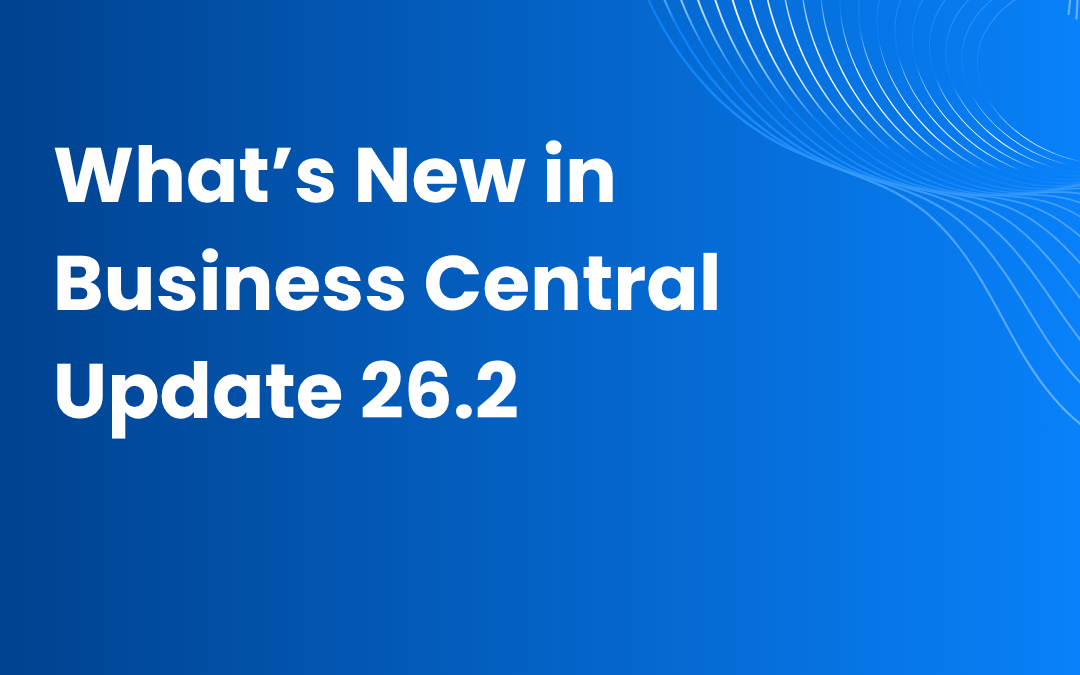Getting Started with Test Automation
With more companies driving cloud transformations and upgrading to modern ERPs like Microsoft Dynamics 365, test automation has become an essential way to ensure critical business processes stay reliable and efficient.
In this guide, we break down what test automation is, why it matters for organizations using modern ERPs like Microsoft Dynamics 365, and how it helps teams move faster and with more confidence.
If you are exploring automation for the first time or want a deeper understanding of how it fits into your organization, you are in the right place. We will show you how moving from manual checks to automated testing reduces risk, saves time, and helps you stay ahead of every update.
What Is Test Automation?
Test automation is a software testing approach where automated tools perform a set of pre-defined tests or actions on an application to quickly verify its functionality before release, minimizing the need for manual testing.
In simple terms, it means using software to test software. Automated tests handle repetitive checks faster and more consistently than manual testing, freeing up your team to focus on higher-value work.
While manual testing is still important for exploratory checks or unique scenarios, automation takes care of the heavy lifting that slows teams down.
Do I Still Need Manual Testing if I Automate My Testing?
Yes. Manual and automated testing work best together. They are complementary, not replacements for each other.
Automated testing is excellent for repetitive, large-scale, and business-critical validations. It ensures your core processes continue to work smoothly after updates, like those frequently pushed by Microsoft Dynamics 365.
However, manual testing remains essential for areas where human judgment, flexibility, and creativity matter most. The insight that people provide when manually exploring workflows or catching subtle usability issues is irreplaceable and critical for a complete quality strategy.
As TheTestMart’s Chief Product and Technical Officer, Matthew Sabath, puts it: “Automation should empower people, not replace them. When humans and automation work together, one person can do the work of many, without losing the critical insight that only people can provide.”
Why Is Test Automation Important?
Updates, new features, and customizations keep your ERP system secure and competitive, but they also introduce risk. Even small changes can impact financial postings, integrations, or supply chain workflows.
Automated testing helps you catch issues early before they disrupt operations or reach your end users. It reduces last-minute surprises and allows you to adopt updates on schedule without compromising stability.
Organizations that invest in automation see faster, more predictable release cycles and fewer production issues. JMP Equipment Company shared in their story that automation helped them adopt Microsoft updates on time and improve team confidence in each deployment.
Automation also strengthens compliance and audit readiness by providing clear, automated evidence that your processes work as intended. It builds trust with IT, business teams, and leadership by proving updates can move forward without putting operations at risk.
What Types of Tests Can Be Automated?
Automated testing covers multiple types of tests to protect every layer of your system:
- Unit tests check that individual areas of an application work correctly on their own.
- Integration tests ensure your application connects and works properly with other systems or external services.
- End-to-end tests confirm that complete, real-world process flows (like order to cash) work as intended from start to finish.
- Performance tests ensure the system stays stable under heavy loads and peak usage.
- Regression tests check that existing features continue to work after changes or updates.
As we discussed in Where to Start With Test Automation in Microsoft D365, starting with high-risk, high-impact processes is the smartest approach.
When identifying strong candidates for automation, focus on these three areas:
Stable and predictable functionalities, which change infrequently and can be reliably automated.
Repetitive and time-consuming tests, which drain resources and are prone to human error.
High-risk and critical business functions, where failures would cause significant operational or financial impact.
Is Test Automation Hard or Expensive to Implement?
Many organizations think automation is too complex or too costly to get started. That perception comes from the early days when automation required heavy coding and specialized skills that only a few IT team members had.
Today, no-code tools and prebuilt test libraries make automation far more accessible and practical for organizations of all sizes.
The initial investment pays off quickly by saving time, reducing the risk that comes with new updates pushed from Microsoft, and avoiding operational disruptions.
At the same time, it is important to recognize that relying on manual testing alone also carries a cost. Not just in time and resources, but in delayed updates, increased errors, and higher long-term risk. As we shared in The Hidden Costs of Manual Testing, these hidden drawbacks often end up being more expensive and disruptive than organizations expect.
Why Automated Testing Matters for Dynamics 365
Microsoft’s One Version model means updates are mandatory and delivered on a set schedule. While organizations can still choose when to take certain updates within a limited window, they have far less flexibility than before and must stay current to remain supported and secure.
You can learn more about staying ahead of the 2025 Microsoft Dynamics 365 updates here.
Even small changes can disrupt critical processes like financial postings, supply chain flows, and integrations if not thoroughly tested. This is why regression testing is not optional. It is a critical requirement with every update.
As Microsoft emphasizes in their official guidance on regression tooling, “You can save time and resources by automating your regression testing.”
Automated testing ensures your core business processes continue to work as expected after each update. It helps you stay on track with Microsoft’s One Version cadence, minimize downtime, and adopt updates without putting your business at risk.
How TheTestMart Helps
At TheTestMart, we believe testing should empower business users, not burden them with complex tools built for developers.
Our platform provides a seamless experience designed to help teams validate critical workflows without needing to write code or rely on IT resources.
With prebuilt test libraries maintained in line with every Microsoft release, your team can skip the heavy lift of scripting and maintenance. We handle execution and updates for you so you can focus on your business instead of chasing broken processes.
Key advantages include:
- No developers needed. Business users can easily digitize and validate workflows.
- Zero in-house QA overhead. We manage everything for you.
- Lower total cost. Eliminate hidden expenses from manual test maintenance and rework.
- Expert oversight. Every test is validated to reduce errors and avoid retests.
Our platform combines intuitive recording, automated test execution, and real-time analytics to give your team confidence in every release, minimize downtime, and support safer, more reliable updates.
Learn more about TheTestMart’s Test Automation Solution here.
Conclusion
Automated testing is not just a technical upgrade. It is a strategic investment that supports stability, faster innovation, and business confidence.
As more organizations move to the cloud and push forward with digital transformation, reliable and scalable testing has become essential to keep pace with updates and protect critical processes.
Whether you are just starting or looking to strengthen your current strategy, investing in automated testing empowers your team to move faster, reduce risk, and focus on what drives your business forward.





